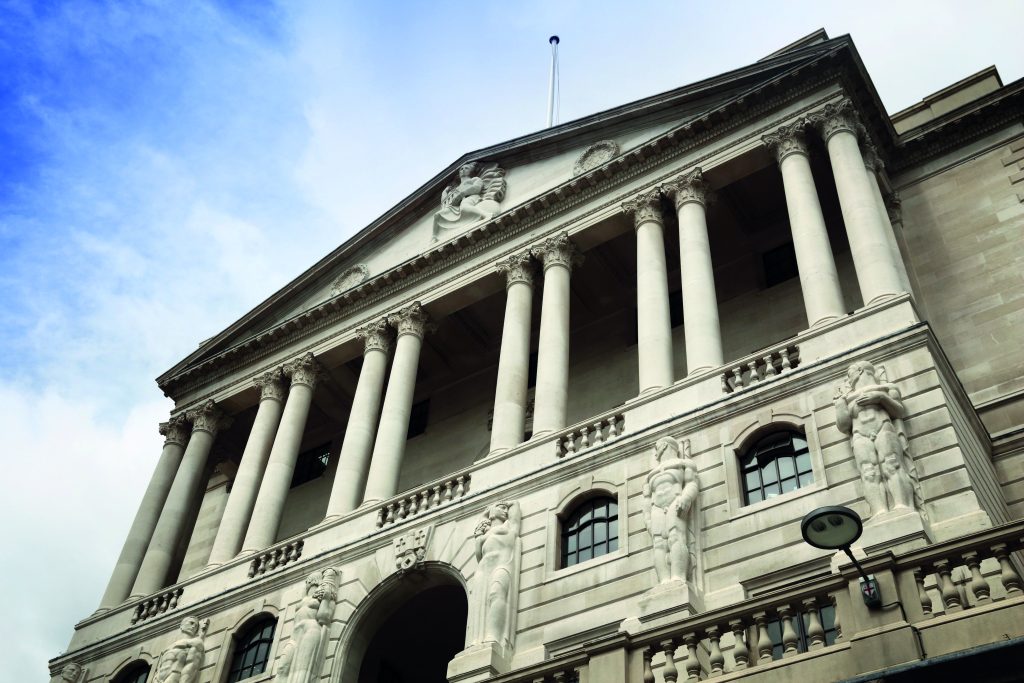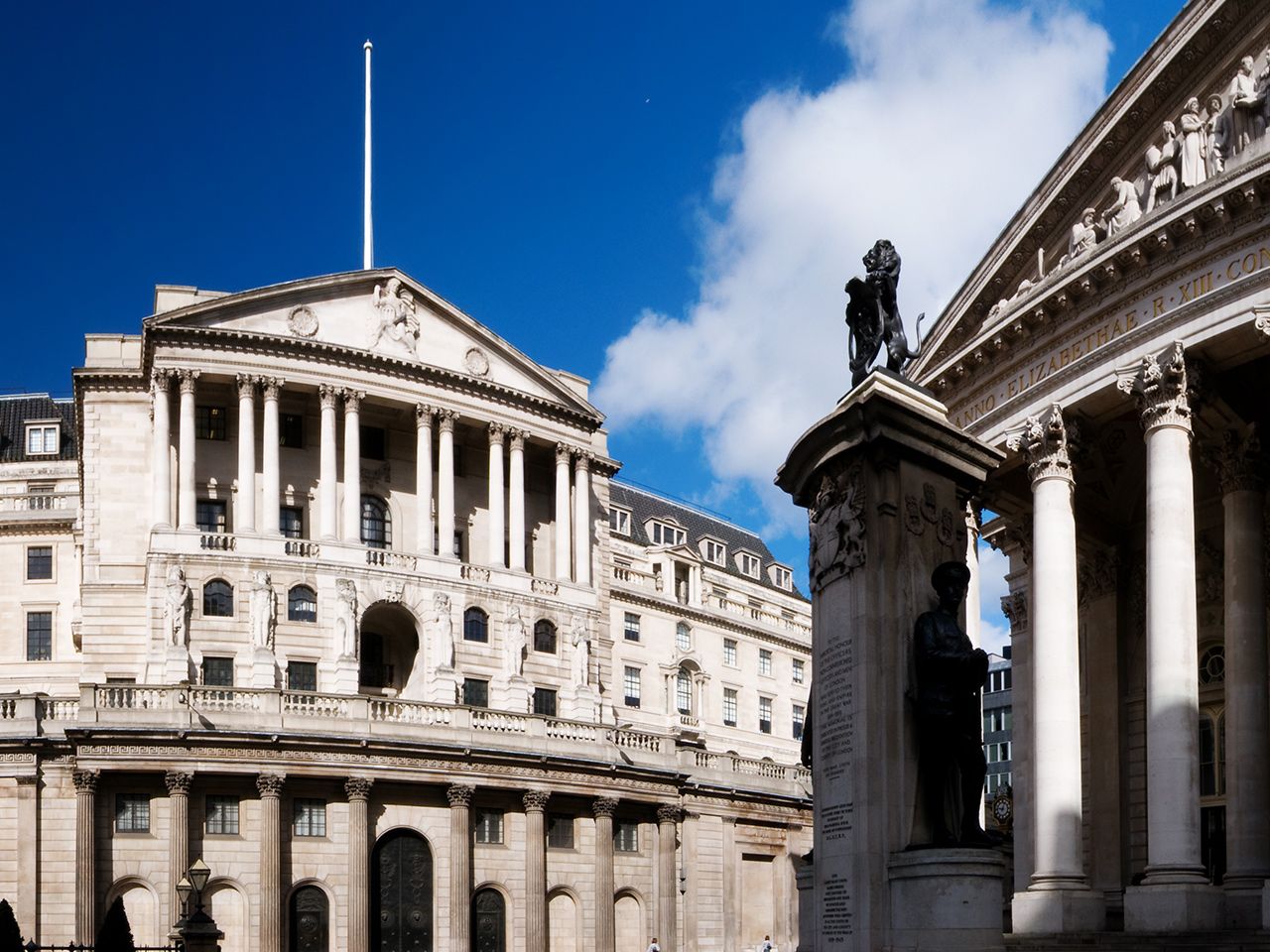Money
How to advise on windfall investment gains

 October saw the UK host a major investment summit aimed at attracting more money into the many investment opportunities our country offers.
October saw the UK host a major investment summit aimed at attracting more money into the many investment opportunities our country offers.
But it wasn’t just prime minister Keir Starmer and chancellor Rachel Reeves making the case for inward investment; we also had the hugely successful American businessman and politician Michael Bloomberg “convinced the future’s bright for Britain”.
Now, when our clients invest, they expect a regular income from their asset in the form of interest and/or dividend payments. Those investing for the long term can move away from the safety of bank deposits into bonds and equities from which we can hope for capital gains too.
Many moderate risk investments will deliver these gains over time, even though their month-by-month asset value growth progression may deliver a saw-toothed graph rather than a smooth incline.
However, occasionally, some of your clients’ investment portfolios may enjoy a windfall gain.
With a defined contribution pension, such as a SSAS or Sipp, the gain is all theirs
Perhaps a pharma company has completed clinical trials on a new drug and found it helps with some cancers and is free of unwanted side effects. Great news for society and a windfall investment gain for those that put money into the company to enable it to research and develop new treatments.
If it was some of your clients’ pension assets that enjoyed this windfall gain, then what happens to the money depends very much on what sort of pension they have.
With a defined contribution (DC) pension, such as a SSAS or Sipp, the gain is all theirs. It will show up immediately in their pension pot if you have advised them to invest directly in the shares. Or it will show up the very next day if they invested via a fund with daily pricing.
If they are age 55 or older, they might choose to take that windfall amount out straight away, less tax, and celebrate by buying the thing they’ve always wanted that’s always been just out of reach.
CDCs give each member an immediate increase to their annual pension amount where schemes benefit from a windfall
However, with a defined benefit (DB) or final salary pension, it’s pretty much the opposite.
DB pensions are ‘balance of cost’ schemes, in which the employer contributes whatever it costs to provide the promised pension. A windfall investment gain typically means the employer can reduce pension contributions, while the members’ benefits remain unchanged.
Today, it may simply accelerate the progress towards scheme buy out with an insurance company – whereupon those benefits become fixed in stone.
With a collective DC (CDC) scheme (there is now one single employer scheme live in the UK – Royal Mail – and a lot more coming as the government unfurls the legislation for multi-employer CDC) it’s a lot more complicated.
Two-thirds of retirees today are living as couples and, for many of them, the gender pensions gap is all too real
CDCs give each member an immediate increase to their annual pension amount where schemes benefit from a windfall. This will be of most value to those on the cusp of retirement, who are about to receive it and have many years of retirement income ahead of them.
However, it will be of much less value to the very old with not long left to draw on their CDC pension, or to young members with decades to go before they draw a pension.
Let’s return to DC schemes for a concluding thought, as that’s where most of your clients are saving for retirement today.
When your clients tot up any windfall investment gain and cry out “it’s all mine!”, do remind them of their obligation to support their spouse or partner’s retirement income as well.
After all, two-thirds of retirees today are living as couples and, for many of them, the gender pensions gap is all too real.
Adrian Boulding is director of retirement strategy at Dunstan Thomas
Money
Halifax reports house prices hit record high in October

House prices increased by 0.2% in October, the fourth monthly increase in a row, the report found.
The post Halifax reports house prices hit record high in October appeared first on Property Week.
Money
A Guide to Finding The Best Investment Properties for Sale in UAE (2025) – Finance Monthly

UAE is undoubtedly one of the best places to find properties with the highest return on investment. Over the years, things have become really investor-friendly. In 2023, the country saw a massive boost in foreign direct investment, reaching $30.69 billion, which marks a 34.97% increase from the previous year. This upward trend underscores the growing confidence in the market, showcasing why finding the best investment properties for sale in UAE remains a lucrative opportunity for investors.
But what makes a property an attractive investment opportunity in UAE? And what are some of the top investment properties currently available in the country? Let’s dive in and guide you through finding the best investment properties in UAE that will bring you high returns in 2025 and beyond.
Signs of the Best Investment Properties for Sale in UAE
Here are some key signs to look out for when searching for the best investment properties for sale in UAE:
Location
Location is the most important factor when hunting for top investment properties in the UAE. But with so many options available, how do you choose the best location? Well, if it’s your first time, then we’ll recommend Dubai Marina. It is a stunning residential area known for its calming vibe, glamorous lifestyle, and towering skyscrapers. Called “The Tallest Block in the World,” Dubai Marina offers amazing marina views with various properties, from high-rise apartments to luxurious hotels.
Then, there’s Downtown Dubai, filled with energy and home to the iconic Burj Khalifa. Here, property choices range from cozy studios to spacious 5-bed townhouses. Prices for these high-end apartments start from AED 3,570,373. Downtown Dubai is perfect for those who want easy access to shopping malls, schools, and great entertainment like the Dubai Mall and Dubai Fountain.
And don’t forget about Palm Jumeirah, a jaw-dropping man-made island shaped like a palm tree. This fascinating island offers everything you need, from fun leisure activities to delightful dining options and pristine private beaches. If you invest in a property here, expect to get a very high rental return, especially during peak tourist seasons.
Infrastructure Development
The UAE’s property market has flourished in the last few years, driven by strategic investments and supportive government policies. The increase in foreign direct investment is living proof of the confidence investors have in this ever-evolving landscape. Key to this growth is the solid infrastructure development across the nation.
The Ministry of Energy and Infrastructure has implemented 129 development projects worth approximately AED 11.8 billion as part of the ministry’s five-year plan (2018-2023). This extensive development has increased demand for properties, making UAE one of the hottest investment spots globally.
Market Trends
Staying updated with the latest market trends is crucial when searching for top investment properties in UAE. One noteworthy trend is the growing popularity of off-plan properties or projects that are still under construction. These offer attractive payment plans and flexible options, making them a preferred choice for many investors. In 2023 alone, Dubai recorded 57,360 off-plan property transactions, a 48% increase from 2022. The success of these off-plan projects shows a promising future for investors looking for high returns.
Rental Yields
When it comes to rental yields, the UAE is shining bright! In the first quarter of 2024, the average gross rental yield was 5.16%, which is an amazing increase from 4.93% in the third quarter of 2023. This rise shows how strong and exciting the property market is becoming in the UAE. For investors, such high rental yields mean more money in their pockets. It’s like getting a bigger piece of a delicious pie! So, if you’re looking to invest, the UAE is the place to be for exciting rental returns.
3 Best Investment Properties for Sale in UAE
Now that you know what makes a property an attractive investment opportunity and the key signs to look out for, let’s take a look at the 3 best investment properties for sale in UAE.
Number 1. Apartment in TIGER SKY TOWER
How wonderful would it be to start your day in a stunning 2-bedroom apartment located right in the bustling heart of Dubai’s Business Bay? Welcome to the TIGER SKY TOWER. With its generous 144.87 square meters of living space, this apartment is designed for comfort and relaxation.
You will have two elegant bathrooms to complement the luxurious living space, and being just 450 meters from the sea, the location couldn’t be more ideal for those who love the ocean breeze. Priced at 4 771 665 AED, this property not only provides you with modern living but also great value, situated close to Dubai’s vibrant city centre.
Number 2. Apartment in Beach Walk
Imagine living in a cozy apartment in the beautiful Beach Walk area of Dubai. This fabulous place features 2 bedrooms and 2 bathrooms, offering a comfortable living space of 93 square meters. It’s close to the sea, just 350 meters away, making it perfect for anyone who loves the beach.
The apartment is priced at 3,300,000 AED, giving you a chance to invest in a valuable property in a prime location in Dubai. If you invest in this property, you’ll also enjoy a range of amenities such as gymnasiums, restaurants and cafes, and breathtaking views of the surrounding area.
Number 3. Apartment in Beach Walk
Discover the stunning Apartment in Beach Walk, Dubai, UAE, a remarkable investment opportunity with elegant features and a prime location. This luxurious property contains 2 bedrooms and 2 bathrooms, providing a generous living space of 93 square meters. Strategically located just 350 meters away from the beautiful sea, this apartment offers both comfort and convenience.
With its exquisite design and access to various amenities, this property promises a harmonious lifestyle in one of Dubai’s sought-after areas. Priced at 3,300,000 AED, it represents an exceptional investment potential.
Conclusion
So, there you have it! A complete guide to finding the best investment properties for sale in UAE. Who doesn’t want to invest in a booming real estate market that offers high rental yields, incredible infrastructure development, and a wide range of property options? Be it the luxurious Palm Jumeirah or the lively Downtown Dubai, you just can’t go wrong with any investment in the UAE. Happy investing!
Want to know more? Visit https://emirates.estate/.
Money
It’s time to save SSAS from extinction

 The venerable small self-administered scheme (SSAS) has been with us as a pensions option for well over 50 years now.
The venerable small self-administered scheme (SSAS) has been with us as a pensions option for well over 50 years now.
It was the true progenitor of self-investment in the pensions industry, leading the way to more opportunities for business people to save for later life.
Over the years, however, SSAS has become somewhat forgotten, particularly once Sipps exploded onto the scene in 1987. Sipps seized the centre stage of self-investment, though the Sipps of today look very different to those early schemes.
Decades of product development have brought the rise of the investment platform, which, although versatile and holding a vice-like grip on the majority of the Sipp market, doesn’t really encapsulate the true spirit of self-investment.
Many planners, perhaps even most, will have never dealt with a Ssas, let alone recommended its use
The challenge is that, alongside this relentless development of Sipps, the client and adviser demographics have also greatly changed. The old guard of pure advisers is slowly ebbing away and a new generation of planners are taking their place.
Many planners, perhaps even most, will have never dealt with a Ssas, let alone recommended its use.
Is SSAS even relevant in today’s world of financial advice?
Yes, I say, absolutely – perhaps now more than ever.
The entrepreneurial self-investment capability still has a solid place within the advice sector, particularly to meet the practical needs of small and medium-sized enterprises – in other words, business-owning clients, who will be on virtually every planner’s books.
Loanbacks – where the scheme lends up to 50% of the scheme value to the sponsoring employer – are highly attractive to business owners
One of the key roles SSAS can play is the opportunity to associate the client’s business as a sponsoring employer. This unlocks that wonderful SSAS specific feature: the loanback.
Loanbacks – where the scheme lends up to 50% of the scheme value to the sponsoring employer – are highly attractive to business owners. This gives access to low-cost funding that can generate business expansion.
There are, of course, rules, or tests, to ensure these loans are compliant with HM Revenue & Customs stipulations, though these are considerably less onerous than the typical lending process deployed by most institutional lenders.
When Sipps began to rule the roost of self-investment, up until around 2012 with RDR, and most certainly from 2016 onwards with the introduction of provider capital adequacy rules, they were the go-to option for anyone looking at non-retail investment solutions. One of the most popular avenues of that time was investment in private company shares.
SSAS will be around for a long time yet. However, I acknowledge it isn’t as popular as the Sipp and has a much smaller target market
These non-standard investment solutions no longer exist in the Sipp world – we could even regard them as extinct.
With SSAS, however, many non-retail asset classes can still be chosen. Furthermore, even when rare Sipp-based private share investment proposals are available, SSAS and loanback can often combine to offer a robust alternative solution.
All sounds great, right? So, why my concern about SSAS extinction?
I believe SSAS will probably be around for a long time yet. However, I acknowledge it simply isn’t as popular as the Sipp and has a much smaller target market. And so, as those advisers familiar with SSAS head into retirement, it’s vital the next generation understand and embrace the product and its many unique capabilities.
For me, it’s a perception thing – SSAS is indeed a ‘legacy’ product. Many of the new generation of advisers weren’t alive when it came into being. Amazingly, many weren’t even around for the advent of Sipps.
Let’s re-think, embrace and celebrate SSAS and the long future it clearly has ahead of it
Perhaps I am being unfair here, though it does feel at times like some people are conflating the legacy feel and age of SSAS with it being obsolete. Equally likely, it’s the perceived complexity of SSAS that’s an issue, particularly in contrast to the hyper-evolved offshoot of those first Sipps: the platform.
Ultimately, clients using SSAS are taking on a more involved role as trustees, with key decision-making responsibilities. Perhaps this alone creates a fear of things going awry.
Nevertheless, when we truly understand its capabilities, it’s hard to draw any conclusion other than, actually, SSAS is absolutely suitable for a segment of today’s clients. And with client outcomes at the heart of the decision-making process, the right solution should always trump other factors, like inherent bias.
The key for the latest generation of advisers and planners is to ensure they obtain the right support structure from the provider they use for SSAS. This includes receiving technical guidance that removes complexity, along with gaining added confidence when recommending SSAS where suitable for client needs.
So let’s re-think, embrace and celebrate SSAS and the long future it clearly has ahead of it.
Matt Storey is head of business development at @sipp
Money
How thousands on state pension can get a FREE TV Licence

THOUSANDS of retirees can get a free TV licence, saving them up to £169.50 per year.
Anyone who wants live television including Sky, ITV, and BBC must obtain one.
The Government is responsible for setting the level of the licence fee.
Last December it was announced that the government would raise the licence fee by 6.7%, in line with inflation, taking effect from April 2024.
This has brought the cost of a colour licence fee to £169.50 per year and a black and white licence fee to £57 per year.
It is illegal to watch live TV without a licence, and you could be fined up to £1,000 if you’re caught.
But if you are claiming the state pension and are aged 75 or over, you could get the licence for free.
That is because anyone in this age bracket can use the service for free if they are claiming pension credit.
If you’re over 75 and not in receipt of pension credit you have to pay for a TV licence, which could be up to £169.50 a year.
You can also get a free licence if your partner claims pension credit but you do not.
To apply for a free TV licence you can visit the following website, https://www.tvlicensing.co.uk/cs/pay-for-your-tv-licence/index.app.
Alternatively, you can call the following number and apply over the phone 0300 790 6071.
But remember, you must be claiming pension credit to get the freebie.
If you are confused about whether or not you claim the payment check one of your bank statements.
You should see an entry with your National Insurance Number followed by the letters “PC”.
What is pension credit?
Pension Credit gives you extra money if you claim the State Pension and are on a low income.
If you live with a partner and you are both of State Pension age, your weekly income must fall below around £350.
However, if your income is slightly higher, you might still be eligible for Pension Credit if you have a disability, you care for someone, you have savings or you have housing costs.
You could get an extra £81.50 a week if you have a disability or claim any of the following:
- Attendance allowance
- The middle or highest rate from the care component of disability living allowance (DLA)
- The daily living component of personal independence payment (PIP)
- Armed forces independence payment
- The daily living component of adult disability payment (ADP) at the standard or enhanced rate.
You could get the “savings credit” part of pension credit if both of the following apply:
- You reached State Pension age before April 6, 2016
- You saved some money for retirement, for example, a personal or workplace pension
This part of Pension Credit is worth £17.01 for single people or £19.04 for couples.
Pension Credit opens the door to other support, including housing benefits, cost of living payments, council tax reductions and the Winter Fuel Payment.
How do you apply?
You can start your application for Pension Credit up to four months before you reach State Pension age.
To apply you’ll need to provide your National Insurance number, information about any income, savings and investments you have, and your bank account details.
If you live with a partner you’ll also need to provide their details.
You can apply online here or by calling 0800 99 1234.
Other ways to get a discounted TV licence
You could be eligible for a discounted TV licence if you live in residential care or sheltered accommodation, or if you’re registered blind.
If you live in sheltered accommodation or residential care and are over 60 or disabled you can get a licence for just £7.50.
If you’re registered blind, or live with someone who is, you’re in line for a 50% discount.
The licence must be in the name of the person registered blind, but if your existing licence is not in their name, you can apply to transfer it.
You can apply for the discount on the TV Licensing website.
Are you missing out on benefits?
YOU can use a benefits calculator to help check that you are not missing out on money you are entitled to
Charity Turn2Us’ benefits calculator works out what you could get.
Entitledto’s free calculator determines whether you qualify for various benefits, tax credit and Universal Credit.
MoneySavingExpert.com and charity StepChange both have benefits tools powered by Entitledto’s data.
You can use Policy in Practice’s calculator to determine which benefits you could receive and how much cash you’ll have left over each month after paying for housing costs.
Your exact entitlement will only be clear when you make a claim, but calculators can indicate what you might be eligible for.
Money
BoE cuts interest rates but ‘sustained downward trend’ needed to truly impact property market

Not a subscriber yet?
Try Property Week For Free to finish this article.
Sign up now for the following benefits:
- Unlimited access to Property Week and newsletters
- Breaking news, comment and analysis from industry experts as it happens

Don’t want full access? REGISTER NOW for limited access and to subscribe to our newsletters.
Money
Reaction as Bank of England cuts base rate again


Experts from across the financial service sector have been giving their reaction after the Bank of England cut rates by a quarter of a percentage point to 4.75%.
The Bank’s monetary policy committee (MPC) voted 8:1 in favour of the cut at lunchtime today (7 November), with one member voting for a hold.
It is the second time this year the MPC has opted to slash rates.
Fidelity International associate director Ed Monk, warned households may have to be more patient for borrowing costs to fall over the next year.
“Despite the fact inflation is now comfortably below target at 1.7%, the speed of rate cuts is not expected to be as quick as it was just a few weeks ago,” he said.
“Today’s Monetary Policy Report forecasts another rise in inflation to 2.75% – back above target – over the next year.
“The Budget last week included significant spending and borrowing commitments which have resulted in a moderate increase in market interest rates, and that may also be reflected in the path for the official bank rate over the next year.
“There are some predictions that the Trump victory could result in higher rates in the US, which may then spill over to other markets, including the UK.
“That’s less certain because it is not yet clear what a Trump second term will hold, and this is unlikely to factor into the Bank’s thinking at this stage.”
Monk said that inflation-beating interest on cash will “no doubt” have tempted some investors to move money from investments into savings accounts.
“The good news for those savers is that, despite the rate fall, cash interest is likely to exceed inflation for a while longer,” he added.
“But there are also clear signs that the path for rates – including cash interest – is falling.
“In that context, it may be time to rebalance your allocation of cash versus investments.”
Hymans Robertson Investment Services (HRIS) Chief Investment Officer, William Marshall, said: “If a Budget the size of Labour’s had come out of the blue then we would have expected the Monetary Policy Committee to be more cautious with cutting rates.
“However, given that the Budget was heavily signposted it wasn’t enough to stop today’s rate cut.
“That being said, the extent of the size of the borrowing communicated in the Budget may have slightly surprised the MPC, given that Rachel Reeves hinted that she would not borrow for day-to-day spending (she is).
“The consequence is that we may see a slower pace of rate cuts next year.”
Hargreaves Lansdown head of personal finance, Sarah Coles, said: “The Bank of England has delivered one more cut for the road, before it’s widely expected to shut up shop for a while and wait for the dust to settle.
“This comes as no surprise, after inflation fell below target, services inflation backed off and wage rises slowed.
“However, there’s a growing expectation that we won’t get a December cut.
“The Bank has said for a long time that inflation will rise as the impact of energy price cuts drops out of the figures.
“However, events of recent weeks have raised the risk of additional inflation.
“More borrowing in the Budget, a higher national living wage and rises in employer National Insurance contributions, have raised concerns that inflation could make an unwelcome return.”
-

 Science & Environment2 months ago
Science & Environment2 months agoHow to unsnarl a tangle of threads, according to physics
-

 Technology1 month ago
Technology1 month agoIs sharing your smartphone PIN part of a healthy relationship?
-

 Science & Environment2 months ago
Science & Environment2 months agoHyperelastic gel is one of the stretchiest materials known to science
-

 Science & Environment2 months ago
Science & Environment2 months ago‘Running of the bulls’ festival crowds move like charged particles
-

 Technology2 months ago
Technology2 months agoWould-be reality TV contestants ‘not looking real’
-

 Science & Environment1 month ago
Science & Environment1 month agoX-rays reveal half-billion-year-old insect ancestor
-

 Science & Environment2 months ago
Science & Environment2 months agoPhysicists have worked out how to melt any material
-

 Science & Environment2 months ago
Science & Environment2 months agoMaxwell’s demon charges quantum batteries inside of a quantum computer
-

 Money1 month ago
Money1 month agoWetherspoons issues update on closures – see the full list of five still at risk and 26 gone for good
-

 Sport1 month ago
Sport1 month agoAaron Ramsdale: Southampton goalkeeper left Arsenal for more game time
-

 MMA1 month ago
MMA1 month ago‘Dirt decision’: Conor McGregor, pros react to Jose Aldo’s razor-thin loss at UFC 307
-

 Science & Environment2 months ago
Science & Environment2 months agoSunlight-trapping device can generate temperatures over 1000°C
-

 Football1 month ago
Football1 month agoRangers & Celtic ready for first SWPL derby showdown
-

 News1 month ago
News1 month agoWoman who died of cancer ‘was misdiagnosed on phone call with GP’
-

 Science & Environment2 months ago
Science & Environment2 months agoLaser helps turn an electron into a coil of mass and charge
-

 Technology1 month ago
Technology1 month agoUkraine is using AI to manage the removal of Russian landmines
-
Business1 month ago
how UniCredit built its Commerzbank stake
-

 Technology1 month ago
Technology1 month agoGmail gets redesigned summary cards with more data & features
-

 News1 month ago
News1 month ago‘Blacks for Trump’ and Pennsylvania progressives play for undecided voters
-

 Technology1 month ago
Technology1 month agoSamsung Passkeys will work with Samsung’s smart home devices
-

 Sport1 month ago
Sport1 month agoBoxing: World champion Nick Ball set for Liverpool homecoming against Ronny Rios
-

 Science & Environment2 months ago
Science & Environment2 months agoA new kind of experiment at the Large Hadron Collider could unravel quantum reality
-

 Science & Environment2 months ago
Science & Environment2 months agoLiquid crystals could improve quantum communication devices
-

 Technology1 month ago
Technology1 month agoRussia is building ground-based kamikaze robots out of old hoverboards
-

 Technology1 month ago
Technology1 month agoEpic Games CEO Tim Sweeney renews blast at ‘gatekeeper’ platform owners
-

 Science & Environment2 months ago
Science & Environment2 months agoWhy this is a golden age for life to thrive across the universe
-

 Science & Environment2 months ago
Science & Environment2 months agoQuantum ‘supersolid’ matter stirred using magnets
-

 MMA1 month ago
MMA1 month agoDana White’s Contender Series 74 recap, analysis, winner grades
-

 News1 month ago
News1 month agoNavigating the News Void: Opportunities for Revitalization
-

 Sport1 month ago
Sport1 month ago2024 ICC Women’s T20 World Cup: Pakistan beat Sri Lanka
-

 News1 month ago
News1 month agoMassive blasts in Beirut after renewed Israeli air strikes
-

 Entertainment1 month ago
Entertainment1 month agoBruce Springsteen endorses Harris, calls Trump “most dangerous candidate for president in my lifetime”
-

 Technology1 month ago
Technology1 month agoMicrosoft just dropped Drasi, and it could change how we handle big data
-

 MMA1 month ago
MMA1 month ago‘Uncrowned queen’ Kayla Harrison tastes blood, wants UFC title run
-

 MMA1 month ago
MMA1 month agoPereira vs. Rountree prediction: Champ chases legend status
-

 Technology1 month ago
Technology1 month agoMicrophone made of atom-thick graphene could be used in smartphones
-

 Technology1 month ago
Technology1 month agoCheck, Remote, and Gusto discuss the future of work at Disrupt 2024
-

 News1 month ago
News1 month agoRwanda restricts funeral sizes following outbreak
-

 Sport1 month ago
Sport1 month agoWXV1: Canada 21-8 Ireland – Hosts make it two wins from two
-
Business1 month ago
Top shale boss says US ‘unusually vulnerable’ to Middle East oil shock
-

 TV1 month ago
TV1 month agoসারাদেশে দিনব্যাপী বৃষ্টির পূর্বাভাস; সমুদ্রবন্দরে ৩ নম্বর সংকেত | Weather Today | Jamuna TV
-

 Business1 month ago
Business1 month agoWater companies ‘failing to address customers’ concerns’
-

 Technology1 month ago
Technology1 month agoWhy Machines Learn: A clever primer makes sense of what makes AI possible
-

 Science & Environment2 months ago
Science & Environment2 months agoQuantum forces used to automatically assemble tiny device
-

 News2 months ago
News2 months ago▶️ Hamas in the West Bank: Rising Support and Deadly Attacks You Might Not Know About
-

 News1 month ago
News1 month agoCornell is about to deport a student over Palestine activism
-

 Technology1 month ago
Technology1 month agoSingleStore’s BryteFlow acquisition targets data integration
-

 Business1 month ago
Business1 month agoWhen to tip and when not to tip
-

 News1 month ago
News1 month agoHull KR 10-8 Warrington Wolves – Robins reach first Super League Grand Final
-

 MMA1 month ago
MMA1 month agoKayla Harrison gets involved in nasty war of words with Julianna Pena and Ketlen Vieira
-

 Science & Environment2 months ago
Science & Environment2 months agoITER: Is the world’s biggest fusion experiment dead after new delay to 2035?
-

 Technology2 months ago
Technology2 months agoMeta has a major opportunity to win the AI hardware race
-

 Science & Environment2 months ago
Science & Environment2 months agoA slight curve helps rocks make the biggest splash
-

 Science & Environment2 months ago
Science & Environment2 months agoNuclear fusion experiment overcomes two key operating hurdles
-

 Football1 month ago
Football1 month ago'Rangers outclassed and outplayed as Hearts stop rot'
-

 MMA1 month ago
MMA1 month agoPennington vs. Peña pick: Can ex-champ recapture title?
-

 Technology1 month ago
Technology1 month agoLG C4 OLED smart TVs hit record-low prices ahead of Prime Day
-
Travel1 month ago
World of Hyatt welcomes iconic lifestyle brand in latest partnership
-

 News1 month ago
News1 month ago▶ Hamas Spent $1B on Tunnels Instead of Investing in a Future for Gaza’s People
-

 Sport1 month ago
Sport1 month agoShanghai Masters: Jannik Sinner and Carlos Alcaraz win openers
-

 Sport1 month ago
Sport1 month agoChina Open: Carlos Alcaraz recovers to beat Jannik Sinner in dramatic final
-

 Football1 month ago
Football1 month agoWhy does Prince William support Aston Villa?
-

 Sport1 month ago
Sport1 month agoPremiership Women’s Rugby: Exeter Chiefs boss unhappy with WXV clash
-

 Money4 weeks ago
Money4 weeks agoTiny clue on edge of £1 coin that makes it worth 2500 times its face value – do you have one lurking in your change?
-

 Technology1 month ago
Technology1 month agoUniversity examiners fail to spot ChatGPT answers in real-world test
-

 Womens Workouts1 month ago
Womens Workouts1 month ago3 Day Full Body Women’s Dumbbell Only Workout
-

 Technology1 month ago
Technology1 month agoMusk faces SEC questions over X takeover
-

 Sport1 month ago
Sport1 month agoSturm Graz: How Austrians ended Red Bull’s title dominance
-

 Sport1 month ago
Sport1 month agoCoco Gauff stages superb comeback to reach China Open final
-
Business1 month ago
Bank of England warns of ‘future stress’ from hedge fund bets against US Treasuries
-

 MMA1 month ago
MMA1 month ago‘I was fighting on automatic pilot’ at UFC 306
-

 Science & Environment2 months ago
Science & Environment2 months agoNerve fibres in the brain could generate quantum entanglement
-

 Science & Environment2 months ago
Science & Environment2 months agoTime travel sci-fi novel is a rip-roaringly good thought experiment
-

 TV1 month ago
TV1 month agoTV Patrol Express September 26, 2024
-

 News1 month ago
News1 month agoGerman Car Company Declares Bankruptcy – 200 Employees Lose Their Jobs
-

 Sport1 month ago
Sport1 month agoURC: Munster 23-0 Ospreys – hosts enjoy second win of season
-

 Sport1 month ago
Sport1 month agoWales fall to second loss of WXV against Italy
-

 MMA1 month ago
MMA1 month agoHow to watch Salt Lake City title fights, lineup, odds, more
-
Business1 month ago
DoJ accuses Donald Trump of ‘private criminal effort’ to overturn 2020 election
-
Business1 month ago
Sterling slides after Bailey says BoE could be ‘a bit more aggressive’ on rates
-
Business1 month ago
Italy seeks to raise more windfall taxes from companies
-
Business1 month ago
‘Let’s be more normal’ — and rival Tory strategies
-

 Sport1 month ago
Sport1 month agoNew Zealand v England in WXV: Black Ferns not ‘invincible’ before game
-

 News2 months ago
News2 months ago▶️ Media Bias: How They Spin Attack on Hezbollah and Ignore the Reality
-

 Science & Environment2 months ago
Science & Environment2 months agoHow to wrap your mind around the real multiverse
-

 Technology1 month ago
Technology1 month agoJ.B. Hunt and UP.Labs launch venture lab to build logistics startups
-

 Technology1 month ago
Technology1 month agoAmazon’s Ring just doubled the price of its alarm monitoring service for grandfathered customers
-

 Technology1 month ago
Technology1 month agoQuoroom acquires Investory to scale up its capital-raising platform for startups
-
Business1 month ago
The search for Japan’s ‘lost’ art
-

 MMA1 month ago
MMA1 month agoKetlen Vieira vs. Kayla Harrison pick, start time, odds: UFC 307
-

 Technology1 month ago
Technology1 month agoThe best shows on Max (formerly HBO Max) right now
-

 Technology1 month ago
Technology1 month agoIf you’ve ever considered smart glasses, this Amazon deal is for you
-

 MMA1 month ago
MMA1 month agoKevin Holland suffers injury vs. Roman Dolidze
-

 News1 month ago
News1 month agoTrump returns to Pennsylvania for rally at site of assassination attempt
-

 Sport1 month ago
Sport1 month agoMan City ask for Premier League season to be DELAYED as Pep Guardiola escalates fixture pile-up row
-

 MMA1 month ago
MMA1 month agoUFC 307’s Ketlen Vieira says Kayla Harrison ‘has not proven herself’
-

 News1 month ago
News1 month agoHarry vs Sun publisher: ‘Two obdurate but well-resourced armies’
-
Politics1 month ago
‘The night of the living dead’: denial-fuelled Tory conference ends without direction | Conservative conference
-

 Technology4 weeks ago
Technology4 weeks agoNintendo’s latest hardware is not the Switch 2
-

 Technology4 weeks ago
Technology4 weeks agoThe FBI secretly created an Ethereum token to investigate crypto fraud


You must be logged in to post a comment Login